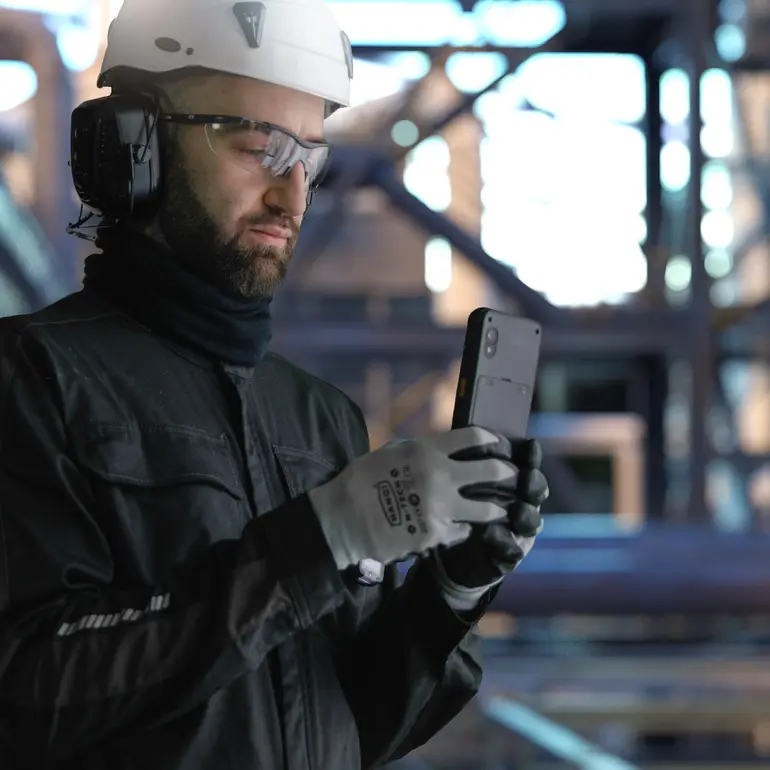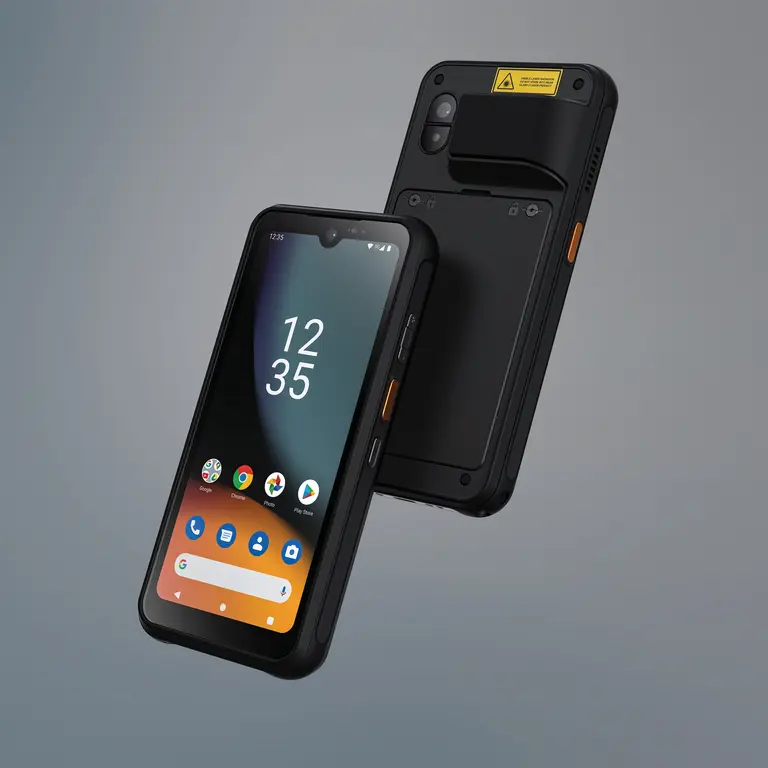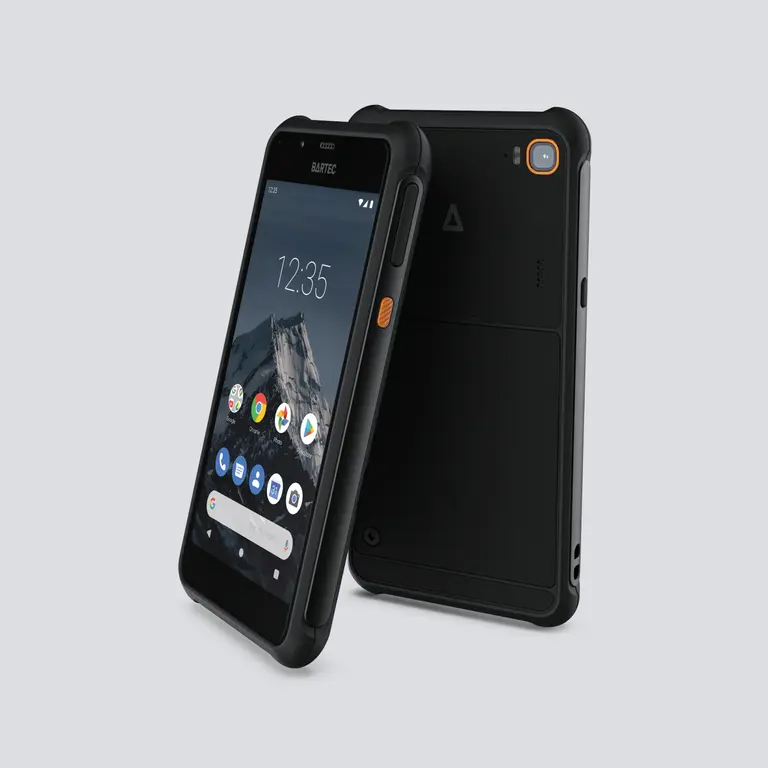Are cell phones intrinsically safe?
The answer is simply no. Regular cell phones by brands like Apple, Samsung, Huawei are not suitable for use in potentially hazardous areas.
Standard smartphones and mobile devices can generate heat, sparks, or static discharges, which may ignite flammable gases, dust, or vapors in hazardous environments. They are not intrinsically safe and they lack specialized technical features that are non-negotiable for safety in potentially hazardous areas. Most importantly, they have no hazardous area certification and, therefore, are unable to comply with safety standards like ATEX, IECEx, NEC 500, or CEC 505, which is a requirement for the use of electrical equipment in hazardous areas.
What is the danger of using a regular cell phone in hazardous area?
The dangers of using a regular smartphone in hazardous areas are various:
1. Ignition risk from sparks or heat:
- Battery faults, short circuits, or damaged components can cause sparks.
- Smartphones can have high surface temperatures under heavy use, potentially exceeding the autoignition temperature of certain gases or dusts.
2. Ingress of Explosive Atmosphere
- Consumer devices may not be rugged enough or have enough protection against gas or dust ingress. For example, if a worker drops a device and the display breaks, flammable gas may enter the device and come into contact with a spark causing the device to ignite.
3. No Fault Protection
- Intrinsically safe equipment is designed to remain safe even in fault conditions (e.g., one or two simultaneous failures). Consumer smartphones have no such protection, meaning a fault could create a dangerous situation.
4. Lack of Certification
- Occupational health and safety regulatory bodies prohibit the use of non-certified devices in hazardous areas.
- Use of a consumer smartphone in such areas can violate safety standards, lead to fines, and invalidate insurance coverage.
What is an intrinsically safe phone?
To ensure safety in potentially hazardous environments, specialized intrinsically safe (IS) mobile phones are designed and certified to prevent ignition sources.
These devices undergo rigorous testing and comply with safety standards like ATEX, IECEx, NEC 500, and CEC505 to be used in hazardous areas without posing a risk of explosion or fire.
If workers operate in such environments, companies must provide them with certified explosion-proof or intrinsically safe mobile devices to maintain safety while staying connected.
The phone needs to have:
- ATEX, IECEx, NEC 500 or other safety standard certifications based on the requirements of the region or country for the needed hazardous zones: Zone 0, Zone 1, Zone 2, Zone 20, 21, 22 or Class I, II, III and Divisions 1, 2.
- Intrinsically safe electrical design: voltage, current, and power in the device mainboard and circuitry (including the battery) are carefully restricted through the use of zener diodes, resistors, and fuses. Alternatively, phones equipped with an explosion-proof case that has been tested and certified by an accredited notified body, may also be considered.
BARTEC’s mobile working products
BARTEC, alongside Extronics - our Connectivity & IoT brand, offers a comprehensive range of mobile working, connectivity, and worker safety solutions for hazardous areas. Explore our range below and learn more about how BARTEC can help you on your digitalization journey.
BARTEC intrinsically safe smartphone and smartscanner
Uncompromised Performance, Stability, and Safety – Ex Phone
Our latest development is the BARTEC SP9EX1 Smartphone, the world’s most compact 5G smartphone for ATEX, IECEx Zone 0/1/21 and NEC 500 Class I, II, III, Division 1.
The key benefits of BARTEC Intrinsically Safe Smartphone:
- Compact and lightweight: Designed and optimized for all-day productivity and one hand use.
- Intrinsically safe design: Over 1,000 dedicated components ensuring ex protection.
- Fast 5G network connectivity: Qualcomm® QCM6490 processor supporting both public and private 5G network connectivity.
- Low-light optimized camera: 48MP main camera and 8MP front camera for video calls.
- Rugged: MIL-STD-810H and IP68 rated for water and dust resistance
Find here the story of how we created the BARTEC SP9EX1 and BARTEC SC9EX1 Smartscanner with our partners Sigma Connectivity, Qualcomm and Zebra Technologies.
Ensure worker safety with intrinsically safe cell phones
Safety should always be the top priority, even when it requires additional effort or investment. In high-risk environments, selecting reliable and effective solutions is crucial to protecting personnel and operations.
When it comes to lone work, it is essential to choose purpose-built intrinsically safe cellphones and other devices equipped with features such as SOS alerts and 24/7 monitoring. Implementing connected solutions enhances worker protection, ensuring a swift response in critical situations and reinforcing a proactive safety culture.




